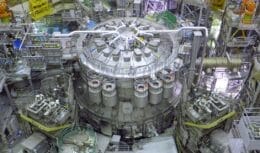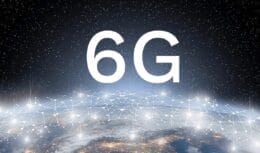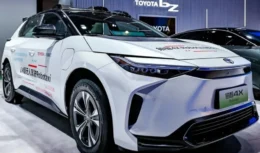
Tim is using off-grid solar energy systems in the project to expand its 4G coverage to cover 100% of Brazil by 2023
Operator Tim is using off-grid solar energy systems in its 4G coverage expansion project, which will reach all Brazilian municipalities by 2023. With the Operator's project, places that are difficult to access and without available electricity will now have Tim's 4G from the installation of towers and antennas powered by solar energy panels.
Read also
The first two off-grid solar energy systems are located and were activated in February, in partnership with Highline. One is in Presidente Bernardes, providing 4G coverage for part of BR 374, and another is in General Salgado, serving SP 463.
Another 13 solar energy systems are also being installed in the states of São Paulo, still with Highline, and in partnership with IHS and Winity in Santa Catarina, Pará and Acre.
Tim shares in the market and solar energy
This initiative is part of Tim's objectives in the use of renewable energy sources, eco-efficiency and access to connectivity, which is already being installed in the country, taking the company's 4G to several locations that are currently not served by other operators.
Each system has its own solar energy generation with photovoltaic panels and to guarantee complete autonomy and more capacity for charging and discharging cycles, the project uses lithium batteries, resulting in a longer useful life for the equipment. According to Tim, this ensures greater 4G coverage with simplified infrastructure, low environmental impact and lower cost.
The estimated reduction in carbon dioxide emissions is approximately 3 tCO2/MWh per year in each system, and the reduction in conventional energy consumption is at least 15 MWh per year.
Construction of Athens 4G in SP
In the operator's schedule presented this Tuesday, the 13th, there are another 13 sites that are preparing to receive solar energy. The projects in São Paulo are supported by Highline. In turn, the sites planned in Acre, Pará and Santa Catarina will have support from IHS and Winity.
In architecture, the off-grid solution will have a maximum physical occupancy of between 16 m² and 24 m², for a much higher autonomy of 36 hours. This will allow a reduction of 3 tons of carbon dioxide (CO²) per MWh per year per site. In conventional consumption reduction, the expectation is 15 MWh less annually.
The technology of sites with solar energy is part of TIM's plan to have 80% eco-efficiency in data transmission and 90% of energy consumption from renewable sources by 2025. Recently, the company announced the construction of two solar plants in Bahia as part of its green energy initiative.
Words from Tim Brasil's CTIO
According to Leonardo Capdeville, the operator's objective is to bring connectivity to all corners of Brazil using various technologies, to cover 100% of the country with its 4G network by 2023.
Mario Girasole, VP of Regulatory and Institutional Affairs at the operator talks about the importance of green initiatives like this one, aligned with the company's ESG pillars. According to him, the project is part of his ESG ambitions and will also collaborate with his goal of, by 2025, covering 80% of eco-efficiency in data traffic and having 90% of its energy consumption coming from totally clean sources, in addition to helping with social aspects when promoting digital inclusion












Not to salute a thief...
Fabiano Barbosa da Silva coordinated in any…
Distribution assistance
How do you do it, send Coricolo
I fully agree... Cuba is a symbol of...
How about correcting this article title…
Moto Aparti 160 must have 6…
Very interesting!!It is aiming at the cool environment